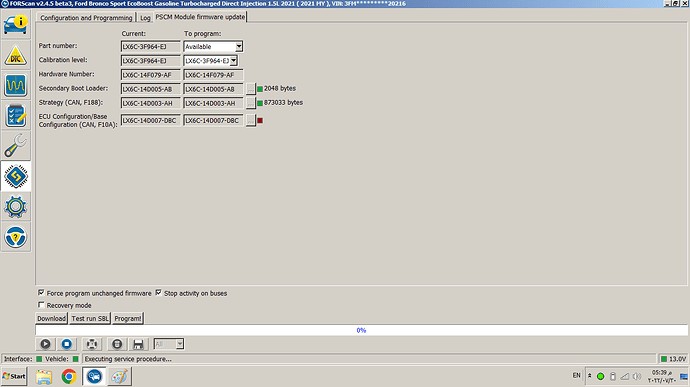Encountering a Diagnostic Trouble Code (DTC) can be a stressful experience for any car owner or technician. Among the various OBDII DTCs, P0073 is one that relates to your vehicle’s Ambient Air Temperature (AAT) sensor. This article delves into the specifics of the P0073 code, its potential causes, symptoms, and how to approach diagnosis and repair.
What Does DTC P0073 Mean?
The OBDII code P0073 is defined as “Ambient Air Temperature Sensor Circuit A High.” This indicates that the Powertrain Control Module (PCM) has detected an abnormally high voltage signal from the Ambient Air Temperature sensor circuit. The AAT sensor is crucial for providing the PCM with outside air temperature readings. This data is used in various engine control calculations, including fuel delivery, ignition timing, and air conditioning system operation.
When the PCM registers a “high circuit” condition, it means the voltage in the sensor circuit is exceeding the expected range. This can be due to several underlying issues, not necessarily a high temperature reading itself, but rather a fault within the sensor or its wiring.
Common Symptoms Associated with P0073
While a P0073 code is directly related to the ambient air temperature sensor, its effects can manifest in various ways in vehicle performance. Some common symptoms include:
- Check Engine Light: The most immediate sign is the illumination of the Malfunction Indicator Lamp (MIL), commonly known as the check engine light.
- Inaccurate Temperature Readings: The temperature displayed on your dashboard or information system might be incorrect or erratic.
- Poor Fuel Economy: The PCM might adjust fuel delivery based on faulty AAT readings, potentially leading to reduced fuel efficiency.
- AC System Issues: The air conditioning system’s performance could be affected, as the AAT sensor data is often used to optimize AC operation. In some cases, the AC might not function at all.
- Engine Performance Problems: In certain scenarios, incorrect AAT readings could contribute to minor engine performance issues, although this is less common with a P0073 code alone.
Potential Causes of a P0073 Code
Several factors can trigger a P0073 DTC. Accurate diagnosis requires a systematic approach to pinpoint the root cause. Here are the most frequent culprits:
- Faulty Ambient Air Temperature Sensor: The sensor itself could be defective, providing incorrect or erratic readings.
- Wiring Issues: Damage to the wiring harness or connectors associated with the AAT sensor circuit is a common cause. This includes:
- Open circuit: A break in the wiring preventing proper signal transmission.
- Short circuit to voltage: The wiring is shorting to a voltage source, causing a high voltage reading.
- Corrosion or damage to connectors: Dirty, corroded, or damaged connectors can disrupt the circuit.
- PCM Malfunction (Less Likely): While less frequent, a fault within the PCM itself could misinterpret sensor signals or incorrectly set the P0073 code. This is usually considered after ruling out other possibilities.
 Untitled
Untitled
Diagnosing and Repairing P0073
Troubleshooting a P0073 code requires a logical diagnostic process. Here’s a step-by-step approach:
-
Visual Inspection: Begin by visually inspecting the AAT sensor and its wiring. Look for any signs of damage, such as frayed wires, corrosion, or loose connections. Pay close attention to the sensor connector and wiring harness leading to it.
-
Scan Tool Verification: Use an OBDII scan tool to confirm the presence of the P0073 code. Note any freeze frame data, which can provide additional context about the conditions when the code was set. Clear the code and see if it returns.
-
Sensor Data Monitoring: With the scan tool, monitor the live data stream, specifically the Ambient Air Temperature sensor reading. Compare this reading to the actual ambient temperature. Erratic or consistently high readings can indicate a faulty sensor.
-
Circuit Testing:
- Voltage Check: Use a multimeter to check the voltage at the AAT sensor connector. Refer to the vehicle’s wiring diagram to identify the correct pins for voltage testing. A high voltage reading on the signal wire when it shouldn’t be there indicates a potential short to voltage.
- Continuity Test: Perform a continuity test on the sensor circuit wiring to check for open circuits or shorts to ground. Again, consult the wiring diagram for proper test points.
- Sensor Resistance Test: Test the resistance of the AAT sensor itself using a multimeter. Compare the measured resistance to the manufacturer’s specifications for the sensor at the current ambient temperature. An out-of-range resistance value suggests a faulty sensor.
-
Component Replacement:
- Sensor Replacement: If the sensor is identified as faulty, replace it with a new, OEM-quality sensor.
- Wiring Repair: Repair any identified wiring issues, such as shorts, opens, or damaged connectors. Ensure proper wiring repairs using appropriate techniques and materials.
-
PCM Diagnosis (If Necessary): If all other components and wiring are verified to be in good working order, and the P0073 code persists, PCM malfunction might be considered. However, PCM issues are less common and should be investigated by experienced technicians.
-
Post-Repair Verification: After completing repairs, clear the P0073 code using the scan tool. Perform a road test to ensure the code does not return and that all symptoms are resolved. Monitor the AAT sensor data stream again to confirm accurate readings.
Conclusion
DTC P0073, indicating an “Ambient Air Temperature Sensor Circuit High” condition, points to potential issues within the AAT sensor system. While seemingly minor, this code can affect various vehicle systems, from fuel efficiency to AC performance. By following a systematic diagnostic approach, focusing on sensor testing and circuit analysis, technicians can effectively pinpoint and resolve the root cause of P0073, ensuring accurate temperature readings and optimal vehicle operation. Remember to always consult vehicle-specific service information and wiring diagrams for accurate diagnosis and repair procedures.
